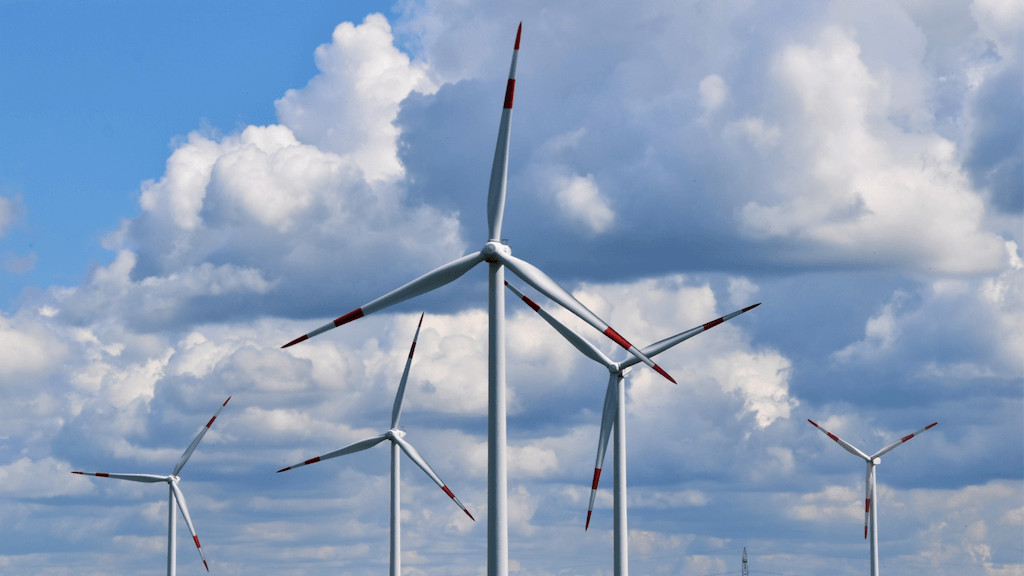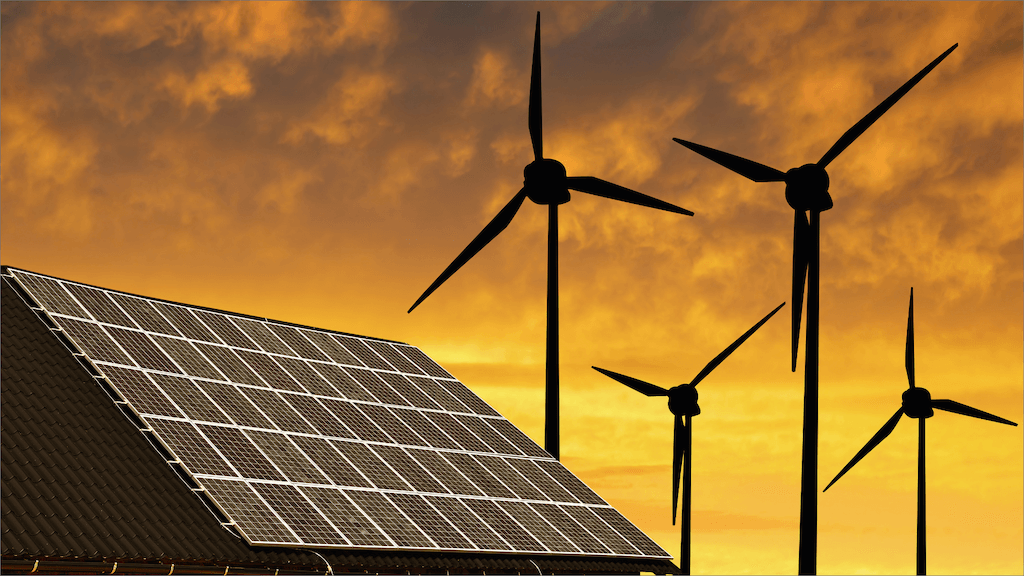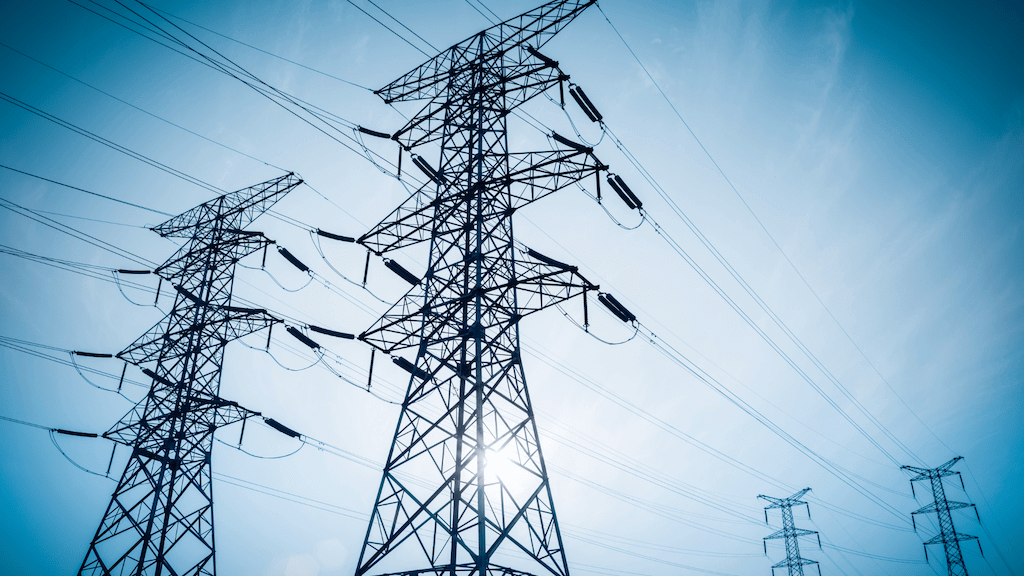Category: MaxinAI Energy Spotlights
With recent developments in social media, customer satisfaction has become even more important than ever. A single positive tweet from your customers can have more impact than thousands of dollars (and sometimes even more) spent on marketing activities.
Unfortunately, the energy sector has lagged behind in providing good service to its customers. In a 2019 research conducted on 4,000 people regarding customer service, energy providers ranked lowest on the charts.
But the good news is that managers began to invest more time and effort to improve this negative trend with the help of predictive analytics in the Energy Sector.
Quickly resolving customer-related problems will always have positive effects on your business, but ensuring that these problems rarely occur is exactly what differentiates great service from good service.
Predictive analytics is exactly the tool that helps energy companies be proactive in the face of problems such as power outages, outdated equipment, unusual spikes in energy use, etc.
Before exploring how exactly all of this can be accomplished, let’s quickly review predictive analytics and what it actually means.
What is predictive analytics?
Predictive analytics is a means of identifying the probability of future events based on historical data and analytics techniques like statistical algorithms and machine learning.
This means that any business can use its historical data and predict future trends and customer behaviors. This can be beneficial for various fields such as marketing, finance, and even law enforcement. For example, if a financial institution has determined that there is a high probability that an individual will default on the repayment of borrowed funds, then they can choose to deny or limit additional borrowing.
Predictive analytics also provides marketing professionals with the ability to predict customer behavior and preferences. By first understanding customers based on their demographics, psychographic, and behavioral data, companies can better cater to the needs and wants of their customers.
Or let’s take the example of an eCommerce store. Let’s assume they introduced a new product and want to offer a 20% discount to a limited number of users.
By analyzing the historical data of its customers with the help of predictive analytics, the store can identify those clients who are most likely to buy the new product and therefore send the campaign offer only to them.
In this way, the store maximizes the probability of success of the campaign.
Now that we understand what predictive analytics is, let’s see how it is used for the energy sector and what are its benefits.
Predictive analytics for the energy industry
One of the biggest causes of dissatisfaction for the energy company’s customers can be the power outage.
This is especially true today since almost all the activities we do throughout the day (work, study or free time) somehow include electronics that depend on the power source.
Things like weather conditions (strong wind, lightning, snow, rain, etc.), vehicle accidents, or equipment failure are the main reasons for the power outage.
Being able to predict the likelihood of any of the above-mentioned events and having a proactive approach to it is what energy companies can do to avoid outages, and predictive analytics is exactly the tool that can help achieve this.
How can the energy sector benefit from predictive analytics?


Before implementing predictive analytics tools, you need to understand whether the data you have is satisfactory.
Knowing how accurate the data is will be one of the most important parts. Is your company capturing the data it wants predictions on? Or is the amount of data sufficient for predictive analytics tools to deliver quality results?
After answering these questions, the next step is to train the models based on historical data to learn and be able to predict certain events and trends.
For example, by training and learning about degree-day data (climate heating and cooling), the model can give the probability of an upcoming winter storm that can damage your electrical grids and lead to a power outage.
With the help of this information, you can prepare in advance and prevent the problem from occurring or, if it still occurs, quickly send out the team and fix the problem.
Imagine the time that would be wasted waiting for a customer to report the issue, then finding out the exact location of the issue, and then telling your team members about it and dispatching them to fix it.
These days are long gone thanks to innovative solutions like predictive analytics.
Conclusion
From equipment failures to information on customer behavior, predictive analytics is the tool based on which electricity companies are obtaining a competitive advantage in the market, however, the implementation of this solution requires a team of professionals with years of experience in similar solutions.
MaxinAI is happy to offer you a free consultation, go over your project and show you the value we can bring to your business.
As the demand for energy grows ever higher, let us help you ensure smooth and uninterrupted service to your customers with innovative machine learning solutions.
The global awareness for a more sustainable future has been growing at a rapid rate and this, in turn, led to the same swift increase in renewable energy generation.
In addition to this, as the awareness of climate change has been heightened, many governments have been pushing forth with initiatives for more sustainable practices.
Sustainable initiatives have been pushed by many governments, while at the same time awareness of climate change has increased. The surge in renewable energy generation has come about as a result of these two aspects and more sustainable practices have been a priority on the agenda.
This is especially noticeable in countries such as Germany, the United Kingdom, Sweden, Spain, Italy, Brazil, etc., which are the leading countries in terms of the highest proportion of renewable energy.
However, even if you are not in these countries, seeing solar panels and wind turbines should not be news to you, as their practices have become widespread around the world.
And while the idea of renewable energy is appealing, it faces certain challenges, challenges that have become one of the top priorities to address in the energy sector. Mainly, how to balance energy production and consumption.
Balancing supply and demand in the power system
Why did energy production and consumption become so important? Well, to be more precise, balancing the supply and demand for electricity has always been and will always be a priority for the sector due to the nature of electricity itself.
Unfortunately, electricity is not like other commodities and it is extremely expensive to store in large quantities. Therefore, there has always been an interest in balancing its use and generation.
Finding the equilibrium between the two is important for everyone who is dependent on electricity, however, it is especially a trending topic for:
- The power generation companies – companies that transform different forms of energy (solar, hydro, wind, fossil, nuclear, etc.) into electricity.
- The Balance Responsible Parties (BRP’s) – Participant in the electricity market that is in charge of balancing the supply and demand of electricity and planning the daily transactions of the electricity network administrations.
To fully understand how the energy market works, let’s take a look at the energy trading process.
Electricity market
As a market for different products, the electricity market is a system in which many participants sell and buy electricity at a competitive price. Ideally, the market provides reliable electricity to consumers at a minimal cost.
However, there are certain conditions that apply to the market.
Capacity Market (CM)
Capacity Market is a mechanism that guarantees compensation to power plants for capacity, or electricity delivered in the future.
Let’s take a look at an example to clarify this. If a customer asks an electricity supplier for 100 megawatts of electricity and will only use 70 megawatts, the consumer is still obligated to pay the supplier for 30 megawatts not used.
Why is this so? This agreement ensures that consumers do not abuse the process and do not order an excessive amount of electricity for the scenario of “just in case.”
With the obligation to pay the extra amount, the market is balanced and ensures that customers order the exact amount necessary so that suppliers do not produce unnecessary amounts of electricity, which is a financial loss for them.
Day-Ahead Market
The day-ahead market allows energy traders to buy or sell electricity one day before the operating day. This process lets buyers and sellers trade and lock in prices a day ahead, dodging price volatility.
Intraday Market
Unlike the day-ahead market, in the intraday market, the negotiation is carried out at energy exchange prices that are valid for the same day of energy delivery.
When it comes to these two markets, there is no case of mutual exclusivity. To ensure the necessary balance between electricity supply and demand, the intraday market often works together with the day-ahead market. However, the prices in the intraday market are much higher as it is a last-minute order.
AI-powered forecasting- The missing piece


By looking at these conditions mentioned above, we can clearly see that for the smooth management of supply and demand from all market participants, it is vital to forecast energy demand and generation.
Artificial intelligence is a tool that has been able to fill this information gap with different methods. Let’s look at some of the most common ways that AI predicts energy consumption and generation.
Time series
The time series is a sequence of data in consecutive order and is used for forecasting future instances based on that observational data.
For our case, the time series is an important aspect for the prediction of the power generation potential based on meteorological data.
By analyzing historical meteorological data related to humidity, wind speed and direction, cloud cover, solar irradiance, etc., we can forecast what is the potential electricity production of renewable energy devices.
Time series are also used to predict what the electricity demand will be based on the specific time period such as weekends, holidays, weekdays, etc. as consumption tends to vary in these periods.
Artificial neural networks (ANN’s)
Neural networks are machine learning algorithms that are powered on data and are inspired by the way the human brain works.
The way the neural network works is that it feeds on input data which then runs continuously with interconnected nodes similar to the human brain, recognizing patterns and correlations of raw data and producing the output data.
The neural network is a widely used method of forecasting time series. Depending on the weather or period data, the neural network will recognize patterns and understand during which days the demand for electricity is highest or how much energy can be produced in a particular season.
Conclusion
After taking a look at the electricity market, we see how important it is to balance the supply and demand for power generation.
Fortunately, with a wealth of accumulated data and modern artificial intelligence methods, members of these markets can predict electricity generation potential or demand and avoid overpriced electricity trading or paying fines.
MaxinAI is made up of leading experts with more than 30 years of experience in the energy sector. Our team has delivered to clients from around the world with 24-hour forecast models with a mean absolute percentage error (MAPE) of 92%.
If you also want to take advantage of innovative tools and predict power generation potential or demand, our experts offer a free consultation call to better understand your specific use case and help us inform you of the necessary steps of our partnership.
The share of renewable energy in power generation is growing. According to BP, renewable energy will be the main source of energy consumption within two decades, like solar energy and other renewables will account for about 30% of the world’s electricity supplies by 2040.
But what is it that makes this energy source so popular and in demand, and how exactly can artificial intelligence come in handy? Before we get to that, let’s take a quick look at the definition of renewable energy.
What is renewable energy?
Renewable energy is a type of energy that is generated from sources that are naturally replenished and never run out. The most popular sources of renewable energy are:
- Solar energy – Energy generated by light and heat from the sun.
- Wind energy – Harnessed energy from the wind by windmills or wind turbines.
- Hydro energy – Energy acquired from the movement of fast running water, like a waterfall.
- Geothermal energy – Geothermal energy is the heat derived from the earth’s subsoil carried to the earth’s surface by water or steam.
- Biomass energy – Energy generated from living organisms such as plants or animals.
So, what makes the above energy types so in demand, and why are they the fastest-growing energy sources? Because renewable energy sources are available mostly for free and are environmentally friendly. These points are especially important in today’s world that raises concerns about climate change.
However, there are two sides to every coin and renewable energy is no exception. There are certain downsides when it comes to renewable energy, but fear not, as this is exactly where artificial intelligence comes in for help.
AI – removing the limitations of renewables


While the concept of renewable energy is great, there are several issues with it. The problem is that although renewable energy sources (wind, solar, etc.) are freely available, they are not obtainable 24 hours a day, 7 days a week. The sun’s rays are available at certain times of the day or there may be no windy days. Unforeseen climates or periods of the season pose the problem of intermittency.
Let’s take a look at the ways that artificial intelligence can be helpful in addressing the problem of intermittence.
Centralized control centers that communicate
With the rise of smart devices and data collection, the energy grid, like most of the technology around us, is becoming more and more interconnected. This paves the way for artificial intelligence to use its algorithms with data from the wireless sensor network to better control operations, such as matching supply with demand, as they should ideally be balanced.
So, by looking at historical data for power demand, day of the week (weekdays or weekends, festivals or holidays) and feeding it to artificial intelligence algorithms, you can predict the possible demand for electricity.
Renewable energy:


For the supply side, weather data plays a very significant role. The collection and analysis of meteorological data such as temperature, humidity, wind speed and direction, cloud cover, solar irradiance, and other weather conditions are vital for AI models to understand and know in advance whether the required amount of energy can be generated.
Artificial intelligence as the future of renewables
The combination of artificial intelligence with the data mentioned above can serve as a robust tool to mitigate the challenges related to renewables. AI technologies can increase efficiency, lower the costs of operation and maintenance, improve grid security, enhance environmental protection, control energy storage
It is also important to note that with the transformation of homes and cities with smart devices and data aggregation, Artificial Intelligence is likely to become more powerful and influential when it comes to renewable energy.
For smart homes and buildings, the question about how much energy they consume is paramount. This data will be used to manage and optimize energy consumption (by predicting peak demand). With this ever-increasing interconnectedness of devices and sources of renewable energy, AI becomes a powerful tool that can help utilities meet increased demands for electricity.
Want to see a real-life example of how a major power supply provider in Germany managed to predict power consumption a day in advance and how it could forecast power generation potential? Be sure to check out our case study then!
We created a model that predicted the energy consumption of a power station one day in advance and could forecast the power generation potential of solar and wind stations.
Challenge
Can you imagine spending a whole day without your phone, laptop or even without electricity at home? Most likely you can’t.
In today’s digital world, electricity is a vital factor in the country’s development. With our evolution, our dependence on electronic devices has also increased. Which, in turn, increased the demand for electricity use.
However, when it comes to energy production we should remember that energy cannot be stored in large quantities, therefore, ideally, energy generation and consumption should be balanced in real-time.


Disparities between supply and demand cause problems not only for businesses but also for ordinary people in everyday life. The demand for electricity does not always match the time when renewable resources are available (the sun doesn’t shine at night and wind often blows when no one wants it to).
That is why the prediction of energy demand and the actual load on electrical grids is important. It helps companies make the right decisions regarding energy planning and generation.
Accurate forecasting of grid load is essential for proper planning and management of electrical power systems. Forecasting load is the basis for the energy price establishment as well for the demand side planning, management and energy storage scheduling.
Our client, one of the largest power supply alliances in Germany, located in the northeast of the country, often faced an unwanted situation where its existing distribution lines could not accommodate the required load during high demand or emergency situations. This occurrence is also known as grid congestion.
There was a need for a smart solution that would help the client avoid the power redispatching problem, altering the power generation and load pattern in order to change physical flows in the transmission system and relieve physical congestion.
Solution from actionable data


Load prediction is a complex problem and to develop a solution that accurately predicts grid load, it is important to understand what various factors influence energy demand.
We started our project by taking a look at conventional power station generation schedules as well as wind and solar power generation data. Also, we got information about the loads from up to 100 substations located in the northeast of Germany.
In addition to the data mentioned above, we analyzed the weather as an important factor in forecasting network load.
Climate plays an important role in forecasting energy demand, especially when the share of renewable energy has increased. Power generation from renewable energy sources like solar panels and wind turbines is highly dependent on weather conditions. Therefore, we analyze data related to temperature, humidity, wind speed and direction, cloud cover, and solar irradiance.


Based on all the data we had access to, we created a benchmarking model. The model was trained for each power substation individually. The client was able to predict the energy consumption of their power station one day in advance and could forecast the power generation potential of solar and wind stations. Based on this, the schedules of conventional power generation could be adjusted.
Delivered:
- Vertical Grid Load 24 hours ahead forecasting model with mean absolute percentage error (MAPE) of 92%
- Models for online Anomaly and Outlier detection/prediction online
- Proposals for data collection and additional data aggregation process
- Proposals for efficient application of open source Big Data management tools and applications


Technologies:
- Prophet, Decision Trees, PyTorch, scikit-learn
Are you interested in a similar project or do you want a different AI solution to improve your business operations? schedule a free call with our experts, we are always happy to chat!
















